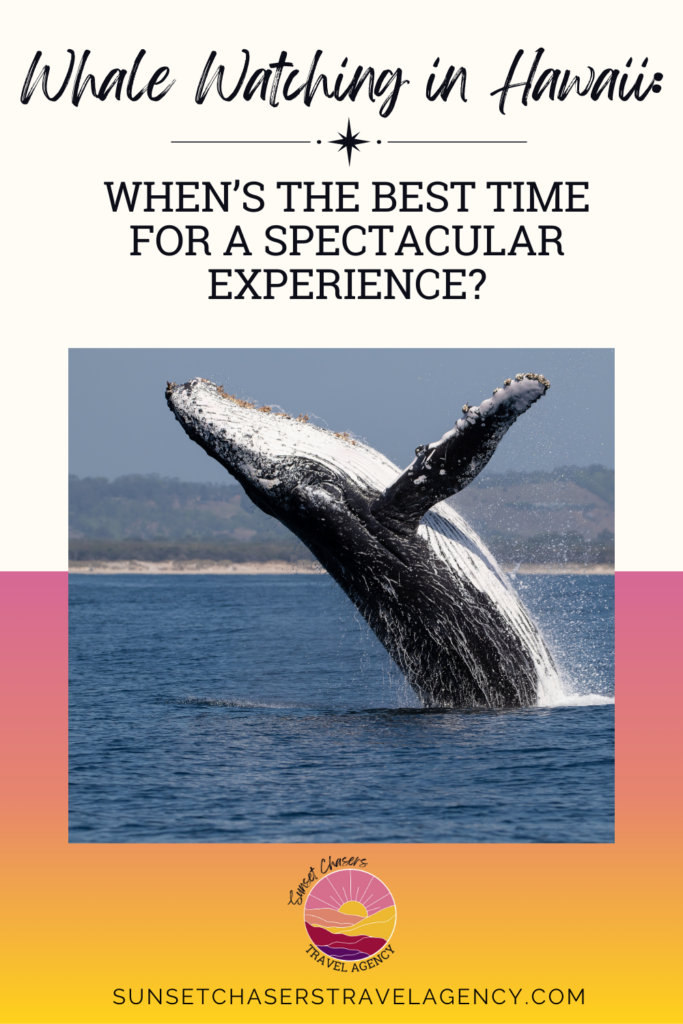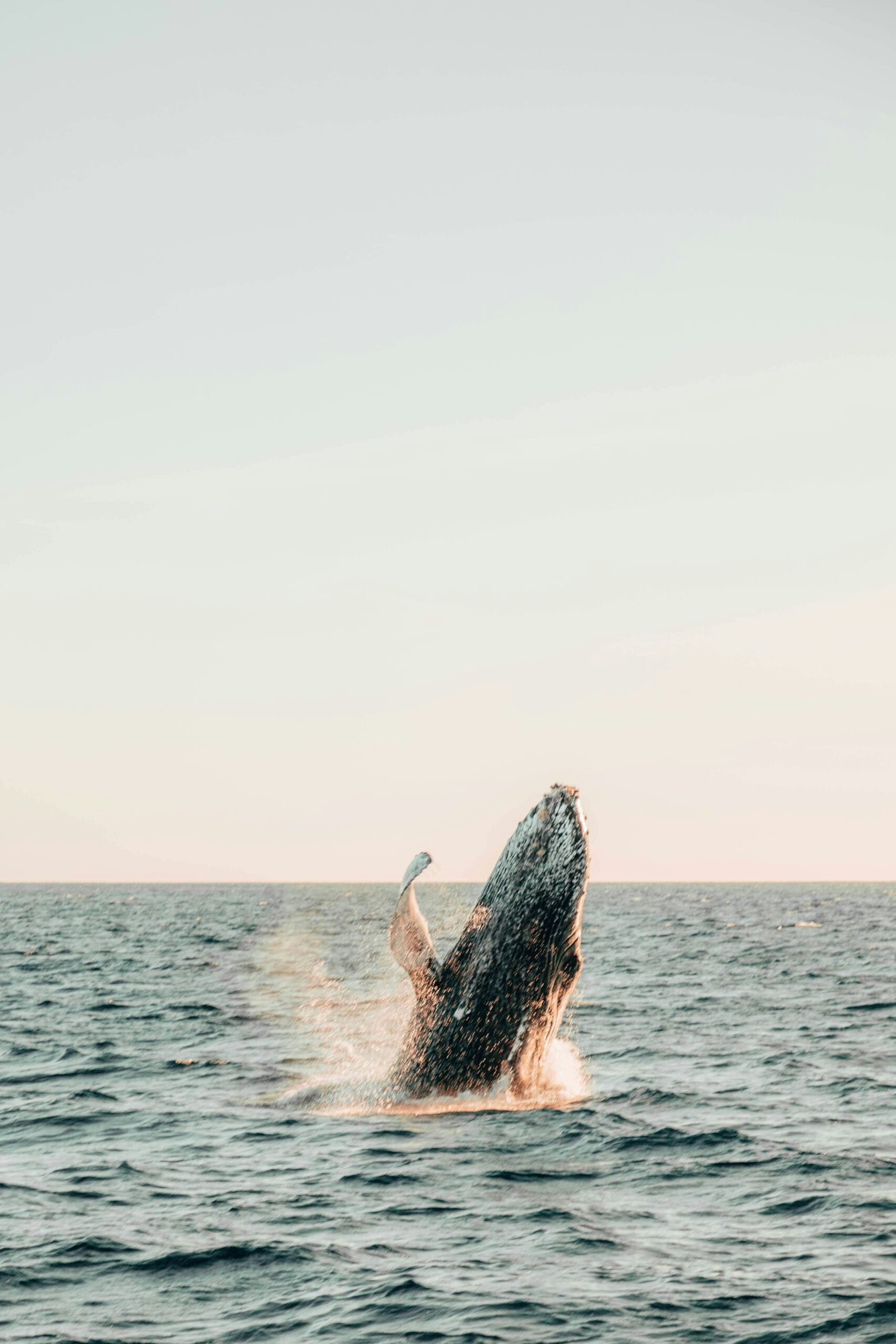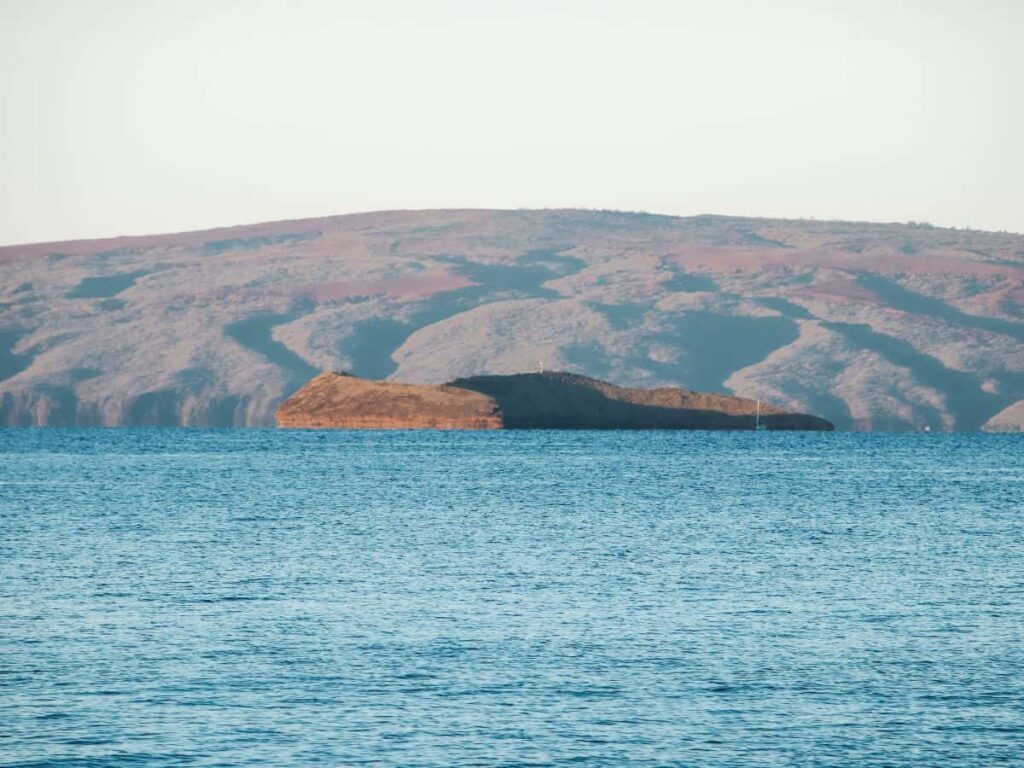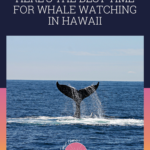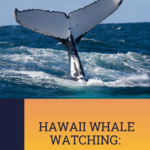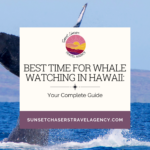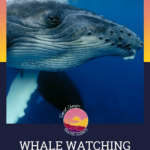Are you thinking of taking a trip to the tropical paradise of Hawaii? Go for it, because it will be a trip of a lifetime! Hawaii is a place of great beauty, and with so much to see and do, you won’t be disappointed!
If you’re a nature lover, getting a close encounter with a whale is just one of the great adventures you can experience on a trip to Hawaii. But what’s the best time for whale watching in Hawaii? We will give you all the information on when and where you can experience the whale-watching season.
Hawaii is home to some of the most incredible marine life on earth. This archipelago has everything from dolphins to sea turtles and everything in between.
However, if seeing the majestic humpback whales breach out of the water is high up on your bucket list (and why wouldn’t it be?), then timing is everything. The peak season for guaranteed humpback whale sightings in Hawaii runs from December through April each year, with January and February being outstanding months for spotting these gentle giants.
This post contains affiliate links, advertisements, and links to Amazon Service LLC Associates Program. As an Amazon Associate, I earn from qualifying purchases. To learn more, go to my Disclosure page.
The Whale Watching Season In Hawaii
The North Pacific Humpback whales migrate thousands of miles each year from Alaskan waters to the warm waters of Hawaii between November and May. This is where mother whales breed and nurse their young around the main Hawaiian islands of Maui, Oahu, and the Big Island.
The arrival of the first whales of the season is a big occasion in Hawaii and is always treated like a homecoming rather than a visit (the whales that return were born in Hawaii). Maui even celebrates the Maui Whale Festival in February at the peak whale season with parades and exhibitions.
The best months for whale watching in Hawaii are January through March, when the North Shore provides ideal conditions for these majestic creatures to play, show off their acrobatic skills and sing their whale songs.
For those looking to see these amazing creatures up close, plenty of options are available. Boat tours offer a unique perspective on these magnificent animals as they breach and play beside your vessel.
Many tour operators specialize in whale-watching tours during the peak months, with expert guides who know exactly where to find whales and the best places for sightings.
Whether you’re visiting during the winter season or summer months, there’s never been a better time to go whale watching in Hawaii! With so much beauty surrounding these islands, it’s easy to see why this state has become such a popular destination for those seeking adventure and a bit of magic.
The Best Locations For Whale Watching
Where are the best locations for spotting these majestic creatures? Early morning before the day’s heat sets in, is the best time of day as this is when you’ll find them feeding closer to shore.
The Au Au Channel is one of the best spots for whale watching and is between the Hawaii islands of Lanai and Maui. This is an excellent spot for viewing whales, as the waters are warm and calm, and it’s a quiet, protected area.
Sperm whales are a common sight here, along with pilot and spinner dolphins. You might even glimpse false killer whales, although these are the least abundant of the whale species, and sightings are declining.
Hilo and Kona are well-known for their whale-watching prospects on the Big Island of Hawaii. The waters off the Kohala Coast, including the areas around Kawaihae Harbor and Anaehoomalu Bay, are frequented by humpback whales during winter.
The waters off the southern and eastern shores of Oahu are home to humpback whales during the winter season. Departing from Honolulu, Waikiki, or the nearby Ko Olina Resort, you can join a whale-watching tour that ventures into these productive whale habitats.
While Kauai doesn’t see as many humpback whales as some other islands, there are still opportunities for whale watching off its shores. The areas near Poipu and Hanalei Bay can offer glimpses of these magnificent creatures during the whale season in Hawaii.
The Auau Channel, a popular migratory route for humpback whales, surrounds Lanai and Molokai. While fewer whale-watching tours depart directly from these islands, you can arrange boat trips from neighboring Maui to explore these waters.
Site If you’re interested in learning about Hawaiian history while whale watching, check out Puukohola Heiau National Historic Site. This location provides scenic views and teaches visitors about traditional Hawaiian beliefs surrounding humpback whales.
Tips For Spotting Whales In Hawaii
We all want to see these majestic creatures up close and personal, and the best way to spot them is to get out early in the morning! This is a great time as they are most active and visible along the coastal areas while still quiet.
While joining large whale tours with dozens of people may be tempting, smaller groups are the best way to go. This allows for a more intimate experience with these endangered species, and small boats have an easier time maneuvering around for optimal viewing angles.
A good pair of binoculars will help you spot whales from a distance. They allow you to clearly see details like breaches, spouts, and tail flukes.
Humpback whales are so big it’s possible to see them from miles away, but you’ll want to get near for a closer look, and tours will help you do that. Some tour companies claim a 97% success rate at whale sightings, so you’re almost guaranteed to see whales if you go whale watching at the right time of year.
When a whale comes to the ocean surface to breathe, it releases a spout of air and water from its blowhole. Scan the ocean for these spouts, which can reach up to 15 feet in height. The spouts are often the first sign of whale presence.
Whales exhibit various behaviors at the water’s surface, such as breaches (jumping up out of the water and belly flopping), a tail slap, pectoral fins slaps, and spy-hopping (showing their head just above the water). Watch for these activities, as they can indicate that whales are nearby.
Remember to watch for other marine life, like green sea turtles and schools of small fish, when on your whale-watching trip. Whales aren’t the only thing you’ll see while on the water.
Boat Tours And Other Whale-Watching Options
Whale watching should be on your itinerary if you’re visiting Hawaii during the winter months. These gentle giants migrate to warmer waters yearly, making it a perfect time for visitors to glimpse these magnificent creatures.
One of the best ways to see whales up close is by taking one of the many whale-watching cruises available with tour operators across all islands. Some tours even offer underwater viewing options to witness these magnificent animals glide through the water alongside smaller fish species.
However, if you prefer something more private or budget-friendly, renting kayaks will give you an excellent vantage point from which to observe them. There are also options like jet boats, catamarans, and outrigger canoe tours.
As you can see, there are plenty of ways to avail yourself of a memorable whale-watching experience. Still, we highly recommend taking a tour with the Pacific Whale Foundation – they offer educational trips led by certified Marine Naturalists who provide fascinating insights into these magnificent creatures.
It’s important to note that Hawaiian culture respects marine life, especially endangered ones like humpback whales and sea turtles, and seeks to protect and conserve it. So, while enjoying your Hawaii vacation, ensure that you choose responsible tour operators who follow guidelines set out by the Marine Mammal Protection Act.
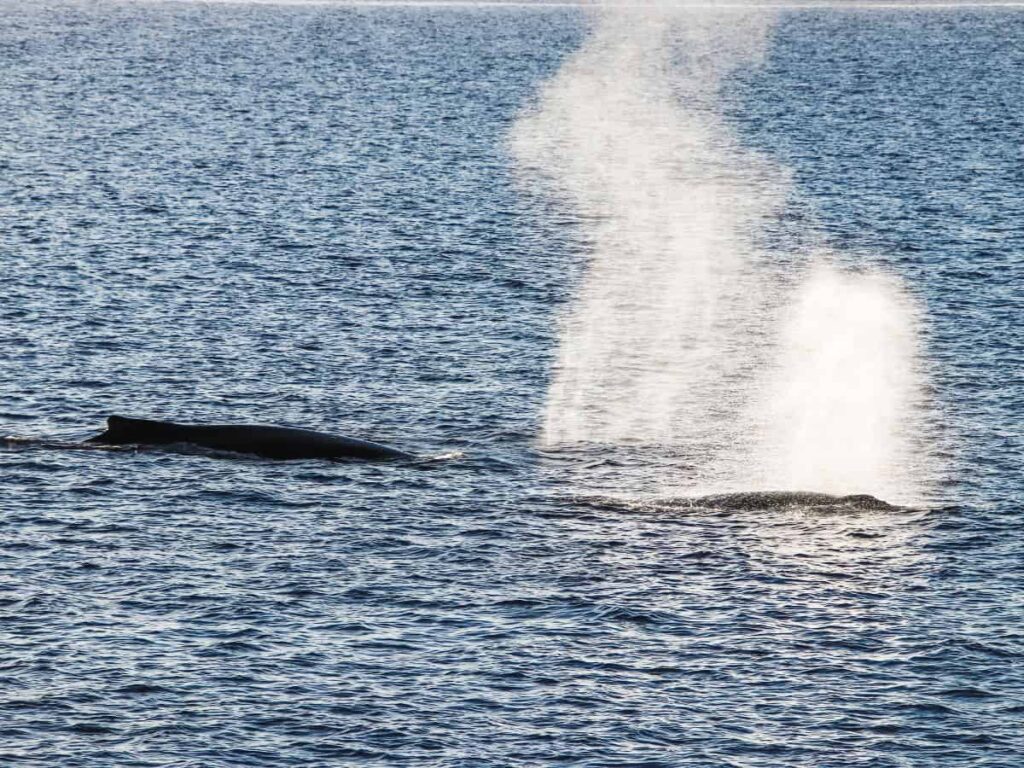
Protecting And Preserving Hawaii’s Whales
While observing these beautiful animals, respecting their space and safety is crucial. The state of Hawaii has strict regulations in place to protect them.
By participating in responsible whale-watching practices, we can help preserve these majestic mammals and the rich Hawaiian culture surrounding them.
Rules and guidelines include:
- Maintaining a minimum approach distance of 100 yards (91 meters) from humpback whales.
- Prohibiting swimming or physical contact with them.
- Avoiding actions that disrupt their natural behavior or alter their course.
Vessels are not allowed to block or cut off the path of the whales, and feeding or attracting them is strictly prohibited. Extra caution is advised around mother-calf pairs, and vessels should approach whales slowly and cautiously, reducing speed and minimizing noise.
The Sanctuary Ocean Count is an annual citizen science project hosted by the Hawaiian Islands Humpback Whale National Marine Sanctuary. Volunteers observe and record humpback whale sightings during the whale season and document any other species encountered. The main aim of this initiative is to raise public awareness about humpback whales and promote whale watching in Hawaii.
Humpback whales were listed as endangered under the U.S. Endangered Species Act in 1970 because of a depleting population but were recently removed from this list due to conservation efforts.
Frequently Asked Questions
What Should You Take On A Whale-Watching Trip?
Bringing a light jacket or sweater is advisable as it can get cooler on the water, particularly during early morning excursions. Since Hawaii has intense sun rays, it’s crucial to prioritize sun protection.
Remember to pack sunscreen with a high SPF, a hat, sunglasses, and a long-sleeved shirt to shield your skin from harmful UV rays. Binoculars are another valuable item to consider bringing to catch glimpses of the whales from afar.
Remember to bring a camera or smartphone with a zoom lens to capture these incredible moments. Also, if you are prone to seasickness, be sure to pack any necessary remedies that you may need.
How Long Do Whales Typically Stay In Hawaii During Their Migration Season?
If you’re planning a trip to Hawaii and hoping to catch sight of some whales, it’s essential to know how long they typically stick around during their migration season.
Most humpback whales stay in Hawaiian waters for about four months yearly, usually arriving in November or December and leaving by May.
Of course, this can vary depending on the individual whale and other factors such as food availability and water temperature. But overall, if you want to see these majestic creatures in action, your best bet is to plan your visit between January and March when the whale-watching tours are at their peak.
There’s nothing quite like experiencing the freedom of these massive animals gliding effortlessly through the crystal-clear waters off the coast of Hawaii.
Can You See Whales From The Shore, Or Do You Need To Go On A Boat Tour To See Them?
Yes, it is possible to see whales from the shores of Hawaii, but if you want an ultimate whale watch up-close experience with these gentle giants, taking a boat tour is your best chance to see more whales and get a good look.
These tours are led by knowledgeable guides who will take you to the right place where whale sightings are most common.
What Is The Average Cost Of A Whale Watching Boat Tour In Hawaii?
The average cost of a whale watching boat tour in Hawaii is around $100-$150 per person, but keep in mind that prices can vary depending on the company and length of the tour. Most are about 2-3 hours long and depart from places like Ka’anapali Beach and Lahaina Harbor, where you will see whales in the tropical waters of south Maui or from Waiki on Oahu.
Don’t let the price tag deter you from experiencing this unforgettable adventure. Seeing these gentle giants breach out of the water and hearing their songs is a magical experience you will never forget!
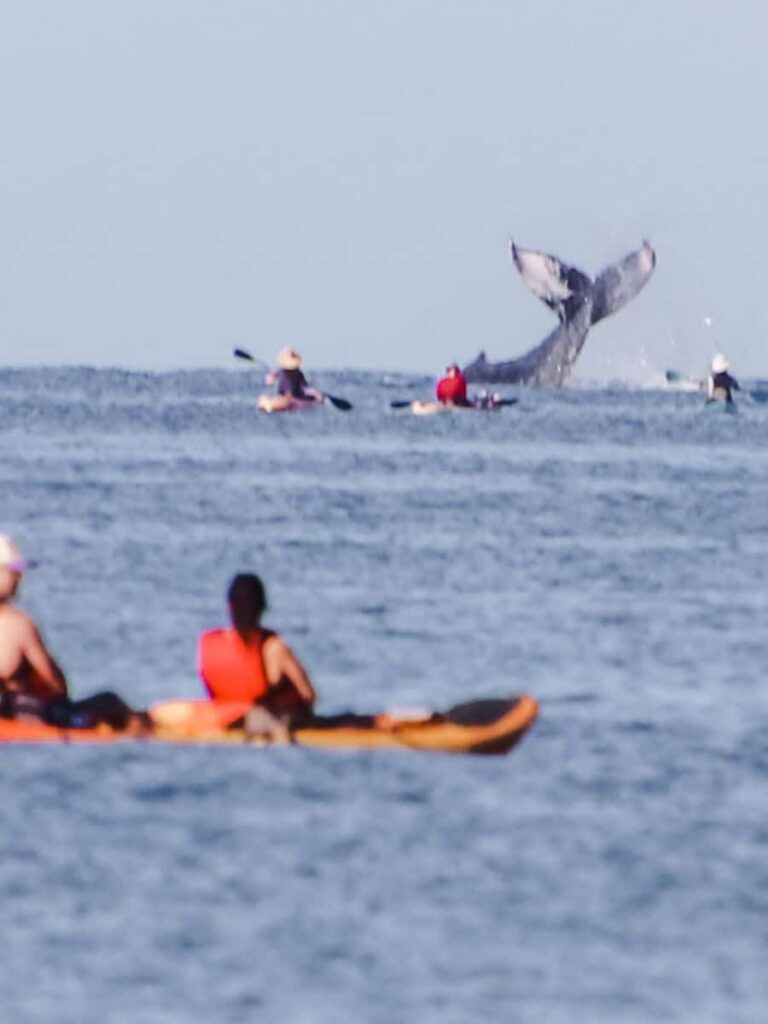
Are Any Restrictions On How Close Boats Can Get To The Whales During Whale Watching Tours?
Yes, restrictions exist on how close you can get to the whales on your whale-watching trip. To protect the whales and their habitat, federal law prohibits vessels and people from approaching within 100 yards of a humpback whale.
This is not just for boats but for swimmers and surfers too. But don’t worry – this doesn’t mean you won’t be able to catch a glimpse of them up close!
At 45 tons, these mammals are enormous, so you’ll feel more than close enough at 100 yards. An experienced tour guide will make sure to keep both you and the whales safe while still providing a great experience.
Best time for whale watching in Hawaii
The best time for whale watching in Hawaii is from December to April. During this period, humpback whales migrate from Alaska to Hawaii’s warm waters to breed and give birth. The length of their stay varies, but they can be seen throughout these months.
Hawaii is home to many different types of whales, but humpback whales are the most commonly seen during whale watching season. These magnificent creatures put on a show with their acrobatic displays, breaching out of the water and slapping their tails against the surface.
If you’re planning a trip to Hawaii during whale watching season, remember to book a boat tour, as they will take you to good places for the best whale sightings. While it will be an extra cost on your vacation, it will be worth it as an experience of a lifetime.
Remember that there are restrictions on how close boats can get to the whales for safety reasons, so always follow your captain’s instructions. Get planning your vacation to Hawaii today – you won’t regret it!

